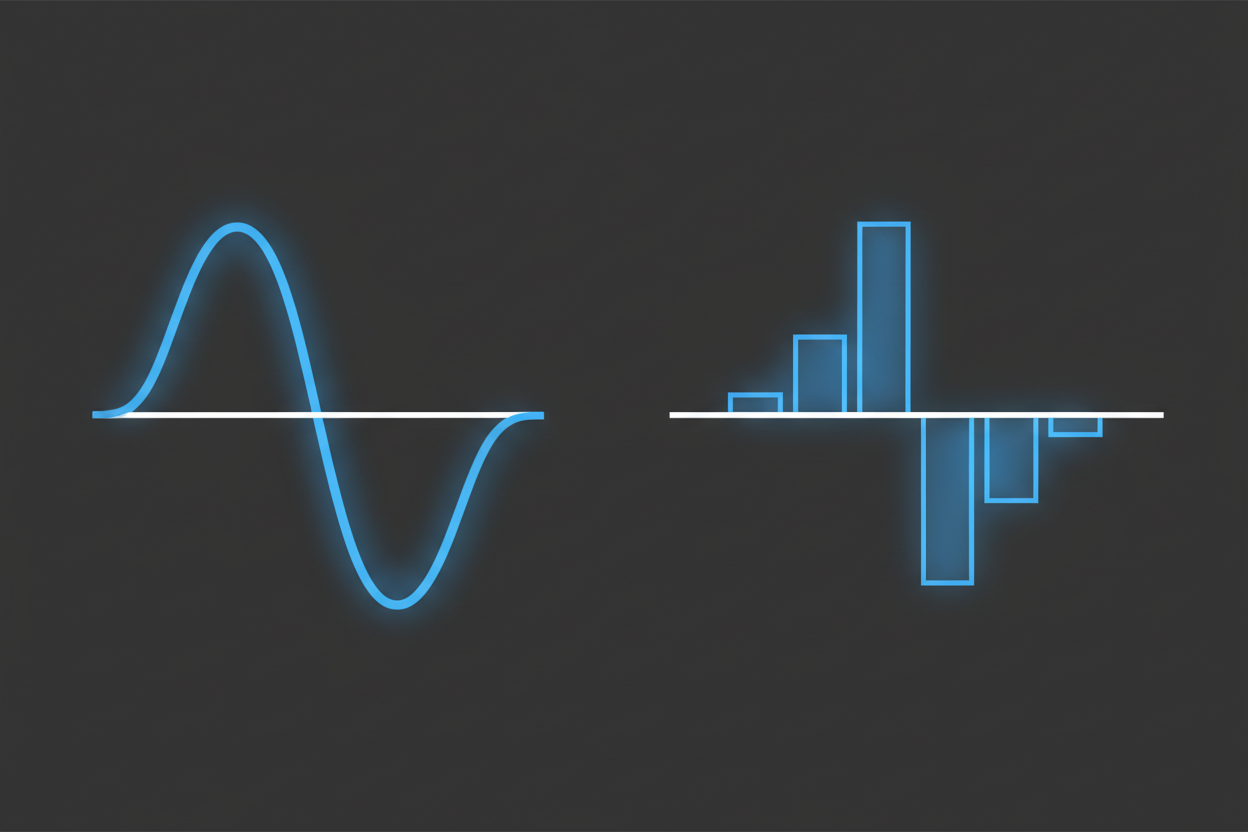Pure Sine Wave vs Modified Sine Wave: Why It Matters for Inverter Generators
Electrical waveform quality determines how safely generators power sensitive electronics. Understanding waveform differences helps users choose reliable inverter generator technology for long-term device protection.
What Defines a Pure Sine Wave
Pure sine waves replicate utility grid electricity using smooth oscillations without voltage spikes. Inverter generators digitally reproduce these curves to maintain consistent output under changing loads.
Stable sine waves prevent stress on power supplies. You can learn more about distortion in our THD in generators guide inside the main Inverter Generator Guide.
How a Modified Sine Wave Works
Modified sine waves imitate AC power using stepped segments instead of smooth curves. These angular transitions introduce noise and increase distortion during everyday use.
Low-cost power inverters often use modified waveforms. Inverter generators avoid this design because they must support laptops, control boards, and other sensitive electronics.
Why Waveform Purity Affects Performance
Waveform quality influences how devices convert AC into DC. Pure sine waves allow converters and processors to operate efficiently with minimal electrical stress.
Stepped waveforms cause heat buildup and reduce stability. These fluctuations shorten device lifespan. More waveform guidance appears inside our Inverter Generator Guide.
Devices That Need Pure Sine Wave Power
Many modern electronics depend on clean waveforms. These devices may malfunction or degrade more quickly when powered by modified sine wave output.
- laptops and tablets
- medical CPAP machines
- LED TVs and monitors
- microwave ovens
- variable-speed tools
- gaming consoles
- smart appliances
- RV control electronics
RV owners can explore related usage details in our RV Generator Guide.
Devices That Tolerate Modified Sine Wave
Some appliances function normally without smooth waveforms. These resistive devices tolerate distortion because they do not rely on complex internal electronics.
- heaters
- older incandescent lights
- simple power tools
- basic resistive loads
Mixed systems still benefit from pure sine wave stability. Homeowners can compare options in our Home Backup Generator Guide.
Why Inverter Generators Produce Pure Sine Waves
Inverter generators use multi-stage conversion. They create raw AC power, convert it into DC, and digitally rebuild clean AC output for stable performance.
Controlled output protects electronics at any engine speed. This purity supports RV air conditioners, refrigerators, and essential home backup equipment.
When Modified Sine Wave Is Acceptable
Modified sine wave systems may work when powering simple tools or emergency lights. These devices do not require precise waveform transitions.
Outdoor users can review cleaner options in our Camping Generator Guide.
Conclusion
Understanding waveform differences helps users evaluate generator safety and compatibility. Pure sine wave output ensures reliable performance across homes, RVs, and outdoor environments.
Explore more efficiency and waveform insights inside the complete Inverter Generator Guide.
